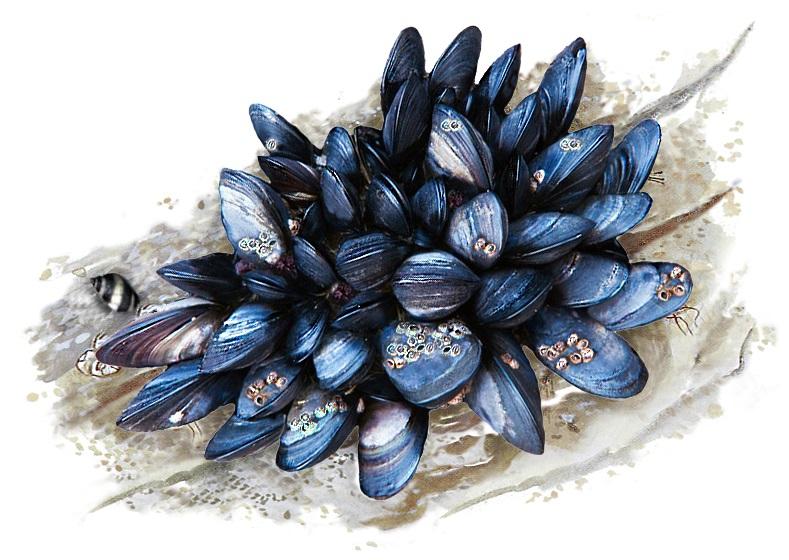
Submitted by Administrator on Tue, 20/08/2019 - 10:24
Global environmental change is generally bad news for life on Earth. But the future may not be entirely doom and gloom. Cambridge biologist Luca Telesca and colleagues have conducted the first large-scale examination of natural variation in biomineralisation in ecologically and economically important Atlantic mussel species Mytilus edulis and M. trossulus within their natural habitats. Little is known about the processes, which allow species such as these to vary regionally. So the researchers tested the mussels ability to vary the production and composition of their calcareous shells which provides them with a resilience to the impacts of climate change in their shallow marine habitat.
Environmental change is known to increase the acidity of ocean waters. And, marine organisms, with bodies that are protected or supported by calcium carbonate (CaCOз) shells or skeletons will be threatened by dissolution of their mineral fabric. In response to the threat of global environmental change, scientists are investigating mechanisms that allow organisms with wide geographic ranges to tolerate variable environmental conditions. Will such adaptive tolerances protect them against future change?
Atlantic blue mussels
Luca Telesca has been working with a departmental colleague and others from Denmark, Germany and the British Antarctic Survey in Cambridge on two species of Atlantic blue mussel, Mytilus edulis and M. trossulus, which are widespread in shallow water ecosystems of the northern hemisphere. In their recent Global Change Biology paper, the researchers show widespread variation in response to different local conditions such as changes in seawater temperature, salinity and food availability across their range of 30 degrees of latitude (3,334 km). They find that salinity is the best predictor of regional variation in the production of mussel shell mineral and organic composition.
Latitudinal variants
The researchers find that shell calcification in these mussel species decreases towards higher latitudes. Here, the lower salinity and cooler waters found in Baltic and polar waters, produce thinner shells but with an increase in organic content. Seen in both the thickening of the external organic periostracum and the underlying prismatic layer of the shell, the increased organic content helps protect the carbonate part of the shell from dissolution. In future, it could also help protect high latitude mussel populations against dissolution of their shells in more corrosive waters. However, this comes at a cost as the organic content is the energetically expensive component of a mussel shell. Consequently, the more energy expended in the increase of the organic content, the less energy is available for growth and reproduction.
Conversely, in lower latitude, warmer waters with higher salinity, the mussel shells have more calcified and thicker shells. Such shells, which are also mechanically stronger, provide greater protection against predators, such as crabs, dog whelks and seabirds, which are more numerous in warmer waters. However, their shells will be particularly vulnerable when weakened by corrosion as ocean waters warm and become more acidic.
Unexpected resilience
The new measures of the ability of blue mussel adaptability are indicative of a compensatory mechanism, which can potentially provide a previously unexpected resilience in these species to global environmental change. According to the authors their findings ‘indicates that a better understanding of key biological processes mediating species’ response to habitat alterations will be essential for identifying vulnerability and informing conservation practice’, this will apply especially for species which have ‘both high climate sensitivity and key ecological roles in shaping marine communities’. Such knowledge ‘underpins our ability to predict accurately and reduce the damaging effect of climate change on future biodiversity’.
Douglas Palmer
Sedgwick Museum
Additional links:
Telesca, L., Peck, L.S., Sanders, T., Thyrring, J., Sejr, M.K. and Harper, E.M. 2019. Biomineralization plasticityand environmental heterogeneity predict geographical resilience patterns of foundation species to future change. Global Change Biology. DOI:10.1111/gcb.14758
The study was developed as part of the CAlcium in a CHanging Environment (CACHE) Marie Curie Initial Training Network aiming at pushing forward our understanding of how commercially important shellfish make their shells in changing environments.
